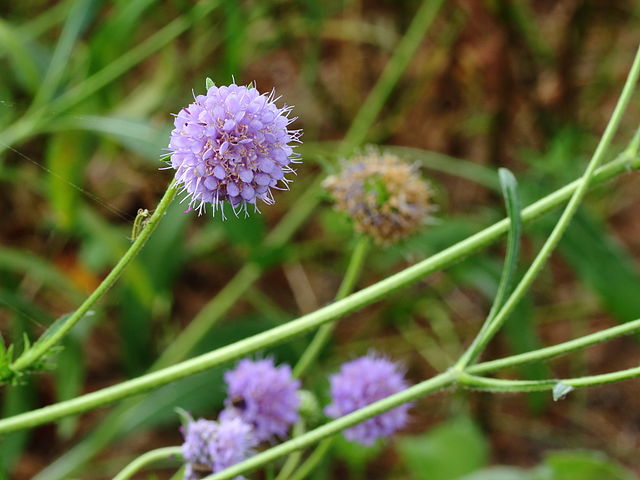 |  |  |   |  |
 |  |
Devil’s-bit Scabious tongue is a perennial plant, 15-90 cm tall. Rhizome short, inclined, with many thick roots. Stems erect, often branched at the top, bare or slightly hairy on the underside, covered with attached hairs on the top.
Lower leaves in a rosette, slightly leathery surface, elliptic or elongated (inverted lanceolate), narrowing towards the petiole. The leaves of the stem are arranged oppositely, sessile, with fused petioles, glossy above, elongated, two or three pairs.
The flowers of the devil’s-bit Scabious are bluish or whitish in color and arranged in a head inflorescence. Inflorescences are arranged on long peduncles. Sepals longer than the inflorescence, elliptic, membranous. The flowers are the same in the inflorescence. Flowering period July-September. Fruit a hairy testicle.
Medicinal properties are possessed by the leaves and root of the plant. In the pharmacy, you will find this plant as Succisae herba (leaves) and Succisae radix (root). The shoots and roots of the plant are collected at different times, the flowers are collected before the plant begins to bloom and it is dried in a well-ventilated and shady place. The root is dug in late autumn, dried slowly, similar to sedges.
Chemically, the plant has been studied relatively little, but it is known to contain bitter substances, tannins and saponins.
Medicinal significance
The medicinal properties of devil’s-bit Scabious are based on the substances present in the plant. The root has anti-helminthic and anti-urinary properties, wound-healing, bactericidal, expectorant, diuretic and laxative properties.
In folk medicine, the plant has been used historically. It is used to treat the upper respiratory tract (coughs, colds and difficulty breathing). A decoction of the root is used for this purpose, it has pronounced expectorant properties. In addition, the decoction of the root relieves headaches and treats stomach ailments.
Using the plant's antiseptic and wound-healing properties, it can be used to treat skin diseases and abscesses. For such purposes, devil’s-bit Scabious is used as applications and compresses. The plant is a good antiseptic, it is used to treat cuts and injuries. For this purpose, crushed and fresh plant or dried is used. A decoction of the root of the plant is a good remedy for helminths (non-toxic). It also has a diuretic and laxative effect.
In ancient times, this plant was also used against poisonous snake and animal bites.
